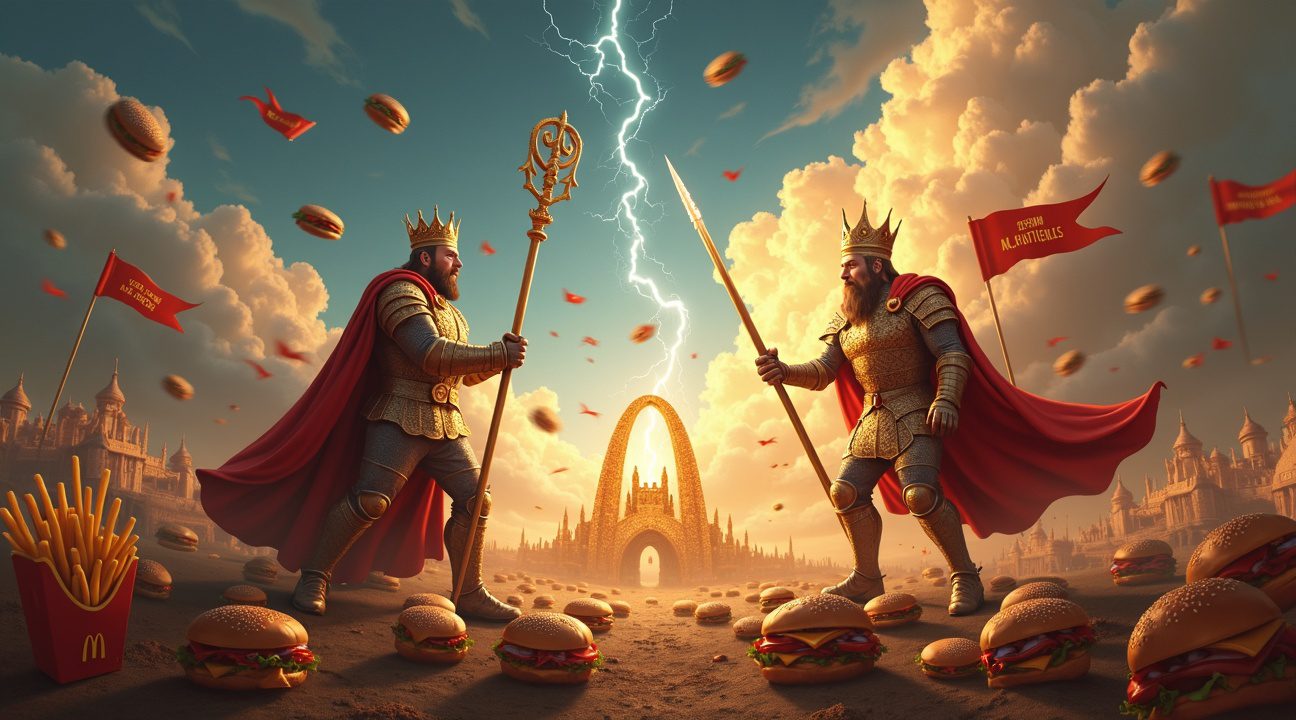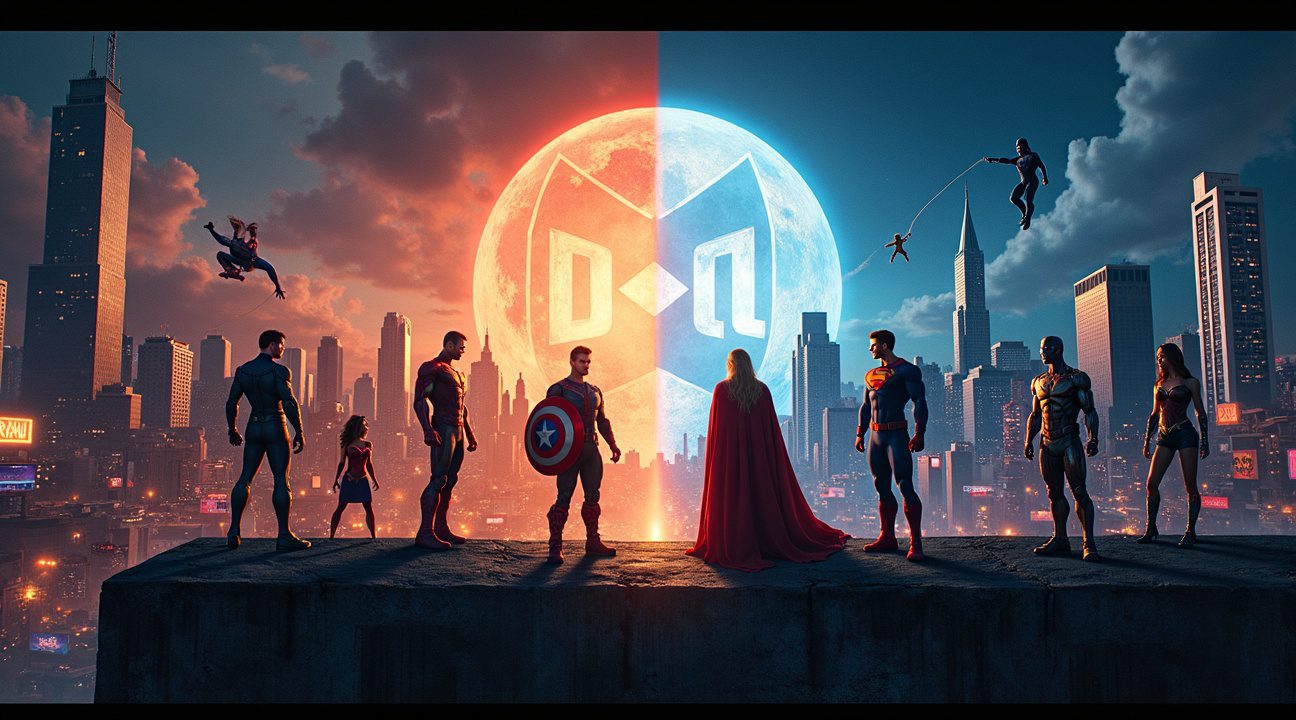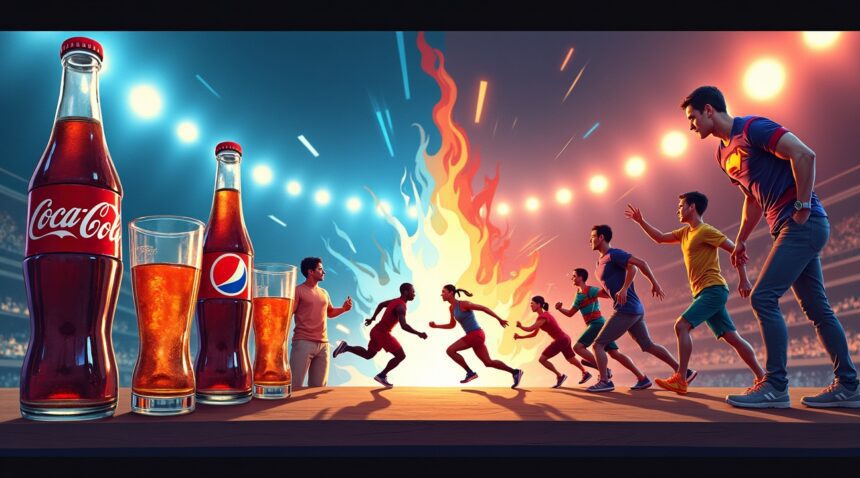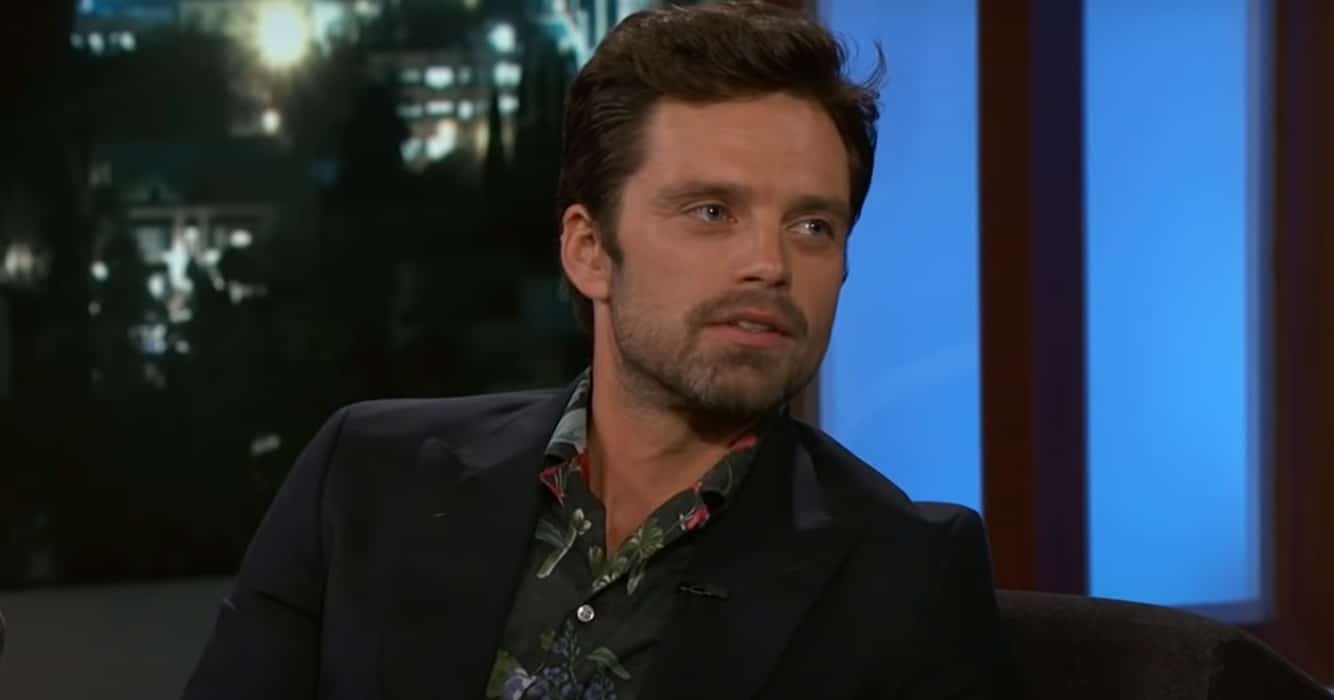The most iconic brand rivalries in business history have fundamentally transformed entire industries, from Coca-Cola versus Pepsi’s taste test wars to Nike’s strategic defeat of Adidas through the revolutionary Air Jordan partnership. These corporate battles extend far beyond simple competition, creating cultural phenomena that drive innovation, reshape marketing strategies, and ultimately benefit consumers through continuous improvement and groundbreaking products.
Key Takeaways
- The Pepsi Challenge revolutionized competitive marketing by introducing blind taste tests in 1975, leading to Pepsi outselling Coca-Cola in supermarkets by 1983 and forcing Coca-Cola’s disastrous New Coke launch that backfired after just 79 days.
- Nike’s Air Jordan partnership transformed athletic marketing by creating the first athlete-specific sub-brand in 1984, helping Nike surpass Adidas to become the global leader with $51.2 billion in revenue compared to Adidas’ $23.6 billion.
- Apple versus Samsung’s smartphone rivalry generated over 50 lawsuits worldwide and a landmark $1 billion patent verdict, while the companies control 35% of the global smartphone market worth $522 billion as of 2023.
- Marvel’s cinematic strategy created the highest-grossing film franchise in history with over $29 billion in revenue from the Marvel Cinematic Universe, while DC and Marvel combined control over 80% of North American comic book sales.
- Brand rivalries consistently drive industry-wide innovation and consumer benefits by forcing companies to continuously improve products, develop creative marketing campaigns, and push technological boundaries to maintain competitive advantages.
The Pepsi Challenge That Changed Everything: How Blind Taste Tests Sparked the Cola Wars
The most enduring beverage battle in history started in the late 1800s when two distinctly different companies emerged within seven years of each other. Coca-Cola burst onto the scene in 1886 in Atlanta, establishing itself as the original cola formula. Seven years later, in 1893, a pharmacist in North Carolina created “Brad’s Drink,” which would be renamed Pepsi in 1898, setting the stage for what would become one of the most fierce commercial competitions ever witnessed.
The Challenge That Shook an Industry
Everything changed in 1975 when Pepsi launched what I consider one of the most brilliant marketing strategies in beverage history. The Pepsi Challenge introduced blind taste tests to consumers across America, removing brand loyalty from the equation and focusing purely on flavor preference. These widely publicized tests consistently showed that people preferred Pepsi’s sweeter taste when they couldn’t see the brand labels.
The results sent shockwaves through the industry. By 1983, something unprecedented happened—Pepsi actually outsold Coca-Cola in U.S. supermarkets for the first time. This achievement represented more than just a sales victory; it proved that consumer preferences could shift even against the most established brands. The benefits of brand rivalries became crystal clear as both companies pushed each other to innovate and improve their products.
New Coke: The Billion-Dollar Mistake
Panic gripped Coca-Cola’s boardroom as they watched their century-old dominance crumble. In 1985, the company made a decision that would go down in marketing history as one of the most catastrophic brand moves ever attempted. They launched “New Coke,” completely reformulating their classic recipe to compete directly with Pepsi’s sweeter taste profile.
Consumer backlash was immediate and devastating. Over 400,000 complaints flooded Coca-Cola’s headquarters within weeks of the launch. Americans felt betrayed by the change to their beloved classic formula. The outcry was so intense that the company reversed course after just 79 days, bringing back the original formula as “Coca-Cola Classic.”
This episode perfectly demonstrates how deeply brands can penetrate consumer identity. People didn’t just drink Coca-Cola; they felt emotionally connected to its heritage and taste. The New Coke disaster actually strengthened the original brand’s position, proving that sometimes failure can become the ultimate marketing victory.
Five generations of consumers have now witnessed this rivalry unfold, each experiencing different chapters of the ongoing saga. Celebrity endorsements became weapons in this war, with both companies signing major stars to represent their brands.
- Pepsi secured Michael Jackson and later Britney Spears.
- Coca-Cola countered with equally impressive celebrity partnerships.
The financial stakes couldn’t have been higher. During the 1980s, the U.S. carbonated soft drink market was worth over $30 billion annually, making every percentage point of market share worth hundreds of millions of dollars. Both companies understood that global advertising campaigns and innovative marketing tactics were essential for survival.
The Cola Wars fundamentally changed how companies approach competitive marketing. Instead of simply promoting their own products, both brands began directly challenging their competitor’s claims and taste. This aggressive approach influenced countless other industries, from technology companies like Apple vs Samsung to athletic brands creating their own fierce competitions.
Today’s beverage industry still bears the DNA of these early Cola Wars. The Pepsi Challenge established blind testing as a legitimate marketing tool, while the New Coke incident taught companies worldwide about the dangers of alienating loyal customers. Both brands continue their rivalry through digital campaigns, sports sponsorships, and innovative product launches, proving that some business battles never truly end—they just evolve with the times.
https://www.youtube.com/watch?v=8BwzYf_ALX0
How Michael Jordan Made Nike Beat Adidas at Their Own Game
The athletic footwear industry witnessed one of the most dramatic power shifts in business history when Nike transformed from an upstart American company into the undisputed global leader, primarily by outmaneuvering the established German giant Adidas. This transformation didn’t happen overnight, but rather through a calculated strategy that culminated in one of the most influential athlete partnerships ever created.
The Foundation of a Legendary Rivalry
Adidas established itself as the original athletic powerhouse when Adi Dassler founded the company in Germany in 1924, building a reputation for quality athletic shoes across multiple sports. Four decades later, Nike emerged in 1964 as a scrappy American challenger, initially focusing on running shoes and gradually expanding into other athletic categories. The competitive tension between these brands escalated throughout the 1970s and reached a fever pitch during the 1980s and 1990s.
Interestingly, the German athletic footwear landscape had its own internal drama, as Adi Dassler’s brother founded Puma, creating additional complexity in the European market. This family feud inadvertently opened opportunities for Nike to exploit, as the German brands sometimes focused more on competing with each other than recognizing the growing American threat.
The Air Jordan Revolution That Changed Everything
Nike’s masterstroke came in 1984 when the company signed basketball sensation Michael Jordan to an unprecedented endorsement deal that created the Air Jordan brand. This partnership represented more than just another athlete endorsement; it fundamentally redefined how athletic companies could leverage star power to build entire product lines and cultural movements.
The Air Jordan deal transformed Nike’s approach to marketing and product development in several key ways:
- Creating athlete-specific sub-brands rather than simply featuring athletes in advertisements
- Developing signature shoes that became collectible items beyond their functional purpose
- Establishing basketball as a primary growth category for athletic footwear
- Building emotional connections between consumers and products through storytelling and cultural relevance
- Generating massive revenue streams that funded further innovation and marketing initiatives
This strategy proved so successful that Nike surpassed Adidas to become the market leader in the United States, fundamentally altering the competitive landscape of the global sportswear industry.
The rivalry intensified further when Reebok emerged as a significant third player during the fitness boom of the late 1980s, even temporarily surpassing Nike’s U.S. sales through its dominance in aerobics and fitness segments. However, Nike’s basketball-focused strategy and continued innovation helped the company reestablish its dominance by the 1990s.
The long-term impact of Nike’s strategic victory becomes clear when examining current market positions. Nike reported revenue of $51.2 billion in 2024, while Adidas generated $23.6 billion in 2023. These figures demonstrate how effectively Nike capitalized on its early strategic advantages, particularly the cultural influence of the Nike and Adidas brand rivalry that continues to drive innovation and consumer engagement across the athletic footwear industry.
Adidas attempted to counter Nike’s success through various strategies, including its acquisition of Reebok for $3.8 billion in 2005, but Nike’s first-mover advantage in athlete-driven marketing and its strong position in basketball culture proved difficult to overcome. The Air Jordan brand alone continues to generate billions in annual revenue for Nike, demonstrating the lasting power of that pivotal 1984 decision.
This rivalry exemplifies how strategic athlete partnerships can reshape entire industries, transforming companies from regional players into global powerhouses while fundamentally changing consumer expectations and market dynamics.
https://www.youtube.com/watch?v=zDnSgyjYzHg

The Smartphone Patent Wars: Apple vs Samsung’s Billion-Dollar Legal Battles
I’ve witnessed one of the most intense corporate rivalries unfold since Apple launched the iPhone in 2007, followed by Samsung’s Galaxy S debut in 2010. These two tech giants have transformed what started as product competition into a legal battlefield that has reshaped the entire smartphone industry.
The numbers tell a compelling story about this rivalry’s scope. Together, Apple and Samsung control over 35% of global smartphone shipments in 2024, operating within a market valued at $522 billion as of 2023. Samsung currently edges ahead with 24% of the global market share in Q1 2024, while Apple holds 20%, creating a dynamic where both companies constantly push each other to innovate.
Legal Warfare and Patent Disputes
The courtroom became another arena for this rivalry, with over 50 lawsuits filed worldwide between the two companies. I consider the landmark 2012 U.S. patent verdict the most significant moment in this legal saga, when Apple secured a $1 billion judgment against Samsung for patent infringement. This verdict sent shockwaves through the industry and established precedents for how design patents would be interpreted in smartphone technology.
These legal battles weren’t just about money – they fundamentally changed how both companies approach product development. Each lawsuit forced both sides to either defend their innovations or find alternative design solutions, ultimately accelerating technological advancement across the industry. The patent wars covered everything from device aesthetics to user interface elements, creating a complex web of intellectual property disputes that continues to influence smartphone design today.
Strategic differences define how each company competes in this rivalry:
- Apple maintains its focus on tight integration between hardware and software, creating what many consider a premium user experience through careful attention to detail and ecosystem connectivity. This approach has allowed Apple to command higher profit margins despite Samsung’s larger market share.
- Samsung emphasizes rapid innovation, releasing multiple flagship devices each year to capture various market segments. This strategy enables it to test new technologies faster and respond quickly to market demands, often introducing features that Apple later adopts in subsequent iPhone generations.
The advertising wars between these companies have become legendary, with Samsung frequently targeting Apple users directly in commercials that highlight specific iPhone limitations. These campaigns often feature side-by-side comparisons showing Samsung devices outperforming iPhones in areas like screen size, battery life, or camera capabilities. Apple typically responds with more subtle marketing that emphasizes user experience and brand loyalty rather than direct attacks.
I find it fascinating how this rivalry has pushed both companies beyond their comfort zones. Samsung’s early Galaxy devices clearly drew inspiration from iPhone design elements, leading to those initial patent disputes. However, this legal pressure forced Samsung to develop its own distinctive design language, ultimately benefiting consumers through greater product diversity.
The competition extends beyond just the devices themselves into flagship features that define each generation:
- Samsung often introduces cutting-edge display technology, camera innovations, and experimental features like foldable screens.
- Apple counters with refined implementations of similar technologies, often arriving later to market but with more polished execution.
This rivalry has created a cycle where neither company can afford to rest on past successes. Samsung’s willingness to experiment with new form factors like the Galaxy Fold series pushes Apple to consider similar innovations. Meanwhile, Apple’s ecosystem integration forces Samsung to strengthen its own software offerings and device connectivity.
The global impact of this competition cannot be understated. Their rivalry has driven smartphone technology forward at an unprecedented pace, delivering better cameras, faster processors, improved battery life, and innovative features to consumers worldwide. Even companies like Nike and Adidas have benefited from similar competitive dynamics, showing how healthy rivalry can drive entire industries forward.
Looking at current market dynamics, both companies continue pushing boundaries while fighting for consumer mindshare. Their ongoing competition ensures that smartphone innovation remains vibrant, with each company’s strengths forcing the other to improve continuously.
https://www.youtube.com/watch?v=Su6DEtGkyiQ
When Burger King Declared War on McDonald’s Golden Arches
McDonald’s established its foundation in 1940, but it wasn’t until Burger King entered the scene in 1954 that the fast-food industry witnessed one of its most enduring rivalries. I’ve observed how these two giants have transformed competitive marketing into an art form, with Burger King consistently positioning itself as the bold challenger to McDonald’s throne.
The rivalry intensified dramatically after Pillsbury acquired Burger King in 1967. This acquisition provided the financial backing needed for Burger King to launch aggressive comparative advertising campaigns that directly targeted McDonald’s cooking methods and product quality. The famous “We flame-broil, McDonald’s fries” slogan became a battle cry that highlighted Burger King’s grilling technique against McDonald’s traditional frying methods.
Burger King’s marketing team consistently pushed boundaries with provocative campaigns designed to capture attention and steal market share. Their approach often featured direct comparisons that questioned McDonald’s product quality and taste, creating a David versus Goliath narrative that resonated with consumers seeking alternatives to the industry leader.
The Whopper Virgins Controversy
In 2009, Burger King launched one of its most controversial campaigns called “Whopper Virgins.” This global taste test compared the Whopper against McDonald’s Big Mac using people who had never consumed either burger. The campaign took crews to remote locations worldwide, including villages in Romania, Thailand, and Greenland, to conduct blind taste tests with locals who had no prior exposure to either brand.
Critics labeled the campaign as exploitative, arguing that it took advantage of people from developing regions for marketing purposes. Despite the controversy, the campaign generated significant media attention and sparked conversations about ethical advertising practices. The results claimed that participants preferred the Whopper, though McDonald’s questioned the methodology and validity of these findings.
The numbers tell a compelling story about this rivalry’s scope and impact. McDonald’s maintains its position as the world’s largest fast-food chain, operating over 40,000 restaurants globally. Burger King holds the second position with over 19,000 locations worldwide, demonstrating the significant gap between these competitors while highlighting Burger King’s substantial presence in the market.
Financial performance reveals the stark reality of this competition:
- McDonald’s: $25.5 billion in revenue during 2023
- Burger King: $1.9 billion in revenue in the same period
These figures illustrate the challenge of competing against such an established leader while maintaining profitability and growth.
This franchise war extends beyond simple product comparisons to encompass breakfast items, value menus, and global expansion strategies. Both chains have invested heavily in breakfast offerings, with McDonald’s all-day breakfast initiative forcing Burger King to develop counter-strategies to maintain relevance in this crucial daypart.
The competitive dynamic has created benefits for consumers through innovation, pricing pressures, and improved quality standards. Similar to how brand rivalries benefit consumers, this fast-food battle has driven both companies to constantly improve their offerings and customer experience.
Burger King’s comparative marketing approach has influenced how challenger brands across industries position themselves against market leaders. Their willingness to name competitors directly in advertising campaigns broke traditional marketing conventions and created a template for aggressive competitive positioning that other brands have adopted.
The rivalry continues to evolve with changing consumer preferences, digital marketing channels, and global expansion opportunities. Both chains face new challenges from emerging competitors, health-conscious dining trends, and technological disruptions that require adaptation of their competitive strategies while maintaining their core brand identities and market positions.

Marvel’s $29 Billion Movie Empire vs DC’s Iconic Superheroes
The battle between Marvel Comics and DC Comics represents one of the most enduring rivalries in entertainment history. DC Comics established itself in 1934, gaining a five-year head start over Marvel Comics, which launched in 1939. This competition has shaped the superhero genre across multiple platforms, from comic book pages to billion-dollar blockbuster films.
The Foundation of Superhero Legends
DC Comics created the blueprint for modern superheroes with iconic characters like Superman, Batman, and Wonder Woman. Marvel responded with its own roster of complex heroes, introducing Spider-Man, X-Men, and the Avengers. These characters became the foundation for what would eventually transform into multimedia empires spanning decades.
The creative approaches differed significantly between the two publishers. DC focused on god-like heroes with clear moral codes, while Marvel developed flawed, relatable characters dealing with real-world problems. This distinction continues to influence their storytelling approaches in modern adaptations.
Box Office Dominance and Cultural Impact
Marvel’s strategic approach to filmmaking revolutionized the industry through the Marvel Cinematic Universe, which has generated over $29 billion since its inception in 2008. This achievement makes the MCU the highest-grossing film franchise in history. DC has produced notable films including Batman v Superman in 2016 and Aquaman in 2018, though their cinematic universe hasn’t matched Marvel’s consistent commercial success.
The rivalry extends beyond individual movies to encompass entire entertainment ecosystems. Both companies leverage their intellectual property across various media, including:
- Streaming series and television shows
- Video games and mobile applications
- Merchandise ranging from toys to clothing
- Theme park attractions and experiences
- Digital comics and graphic novels
Combined, Marvel and DC account for over 80% of all comic books sold in North America, demonstrating their stranglehold on the original medium that birthed their characters. Fan debates continue to fuel engagement across social media platforms, conventions, and online forums.
The competition drives innovation in storytelling techniques, special effects technology, and marketing strategies. Each success from one company pushes the other to elevate their game, similar to how brand rivalries benefit consumers through improved products and services.
Modern audiences witness this rivalry playing out in real-time through box office numbers, critical reception, and cultural conversations. The competition has proven that rivalries can drive excellence, pushing both companies to create increasingly ambitious projects that captivate global audiences and generate billions in revenue.

Other Corporate Feuds That Defined Industries
The corporate landscape is filled with fierce rivalries that have shaped entire industries and captured public attention for decades. These battles extend far beyond simple competition, creating cultural phenomena that influence how companies market themselves and how consumers perceive brands.
Package Delivery Wars and Battery Battles
DHL revolutionized package delivery marketing with their audacious ‘Fed Up’ campaign that directly mocked competitors. This cheeky approach demonstrated how companies could use humor to differentiate themselves in a commodity-driven industry. Package delivery services have since adopted increasingly creative marketing strategies to stand out in this highly competitive space.
The battery technology wars between Duracell and Energizer showcase how mascot-driven advertising can define an entire product category. Energizer’s pink bunny “keeps going and going,” while Duracell built its reputation around the copper-top design and reliability messaging. I’ve observed how these campaigns transformed batteries from a mundane purchase into brands with distinct personalities and consumer loyalty.
Luxury Markets and Digital Disruption
Ferrari vs. Lamborghini represents the pinnacle of prestige automotive rivalry. These luxury cars compete not just on performance metrics but on heritage, exclusivity, and brand cachet. Each manufacturer has cultivated distinct identities – Ferrari’s racing pedigree versus Lamborghini’s rebellious flair – that command premium pricing and fierce customer devotion.
Sotheby’s and Christie’s have dominated art auctions for over two centuries, continuously trading the title of most expensive art sold. Their rivalry extends beyond simple business competition into cultural influence, as these auction houses shape artistic taste and market values globally. Each sale becomes a high-stakes performance where reputation and expertise matter as much as the artwork itself.
The browser wars of the 1990s between Netscape and Microsoft fundamentally altered how we interact with technology. Netscape Navigator commanded 80% market share in 1995, but Microsoft’s strategy of bundling Internet Explorer with Windows proved devastatingly effective. This conflict led to significant government antitrust actions and established precedents for digital market competition that continue to influence tech regulation today.
These rivalries demonstrate how competition drives innovation, creates compelling narratives, and ultimately benefits consumers through improved products and services. From brand rivalries in sports to tech giants battling for market dominance, these corporate feuds have become integral to business strategy and consumer culture.
Sources:
Coca-Cola Company, PepsiCo – “The Pepsi Challenge That Changed Everything: How Blind Taste Tests Sparked the Cola Wars”
Nike, Adidas – “How Michael Jordan Made Nike Beat Adidas at Their Own Game”
Apple Inc., Samsung Electronics – “The Smartphone Patent Wars: Apple vs Samsung’s Billion-Dollar Legal Battles”
McDonald’s Corporation, Burger King (Restaurant Brands International) – “When Burger King Declared War on McDonald’s Golden Arches”
Marvel Entertainment (Disney), DC Comics (Warner Bros. Discovery) – “Marvel’s $29 Billion Movie Empire vs DC’s Iconic Superheroes”
DHL, FedEx, Duracell, Energizer, Ferrari, Lamborghini, Sotheby’s, Christie’s, Netscape, Microsoft – “Other Corporate Feuds That Defined Industries”


